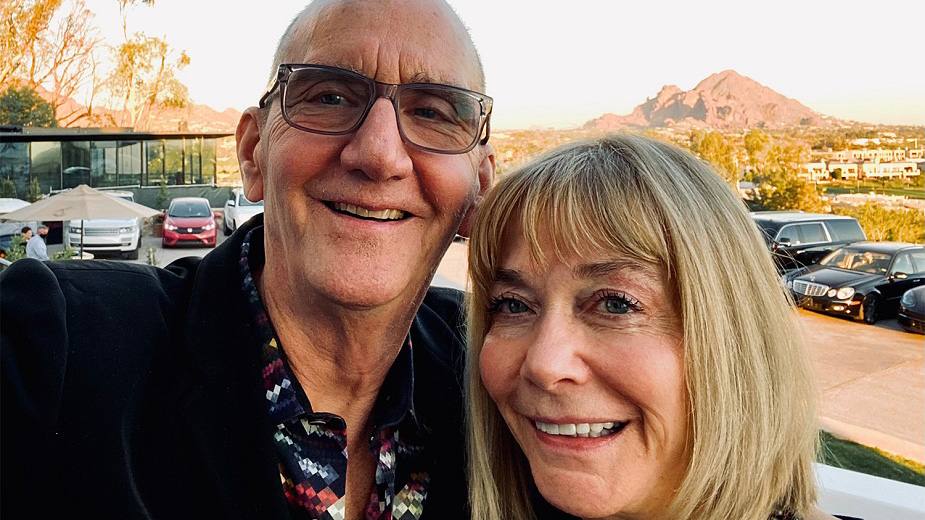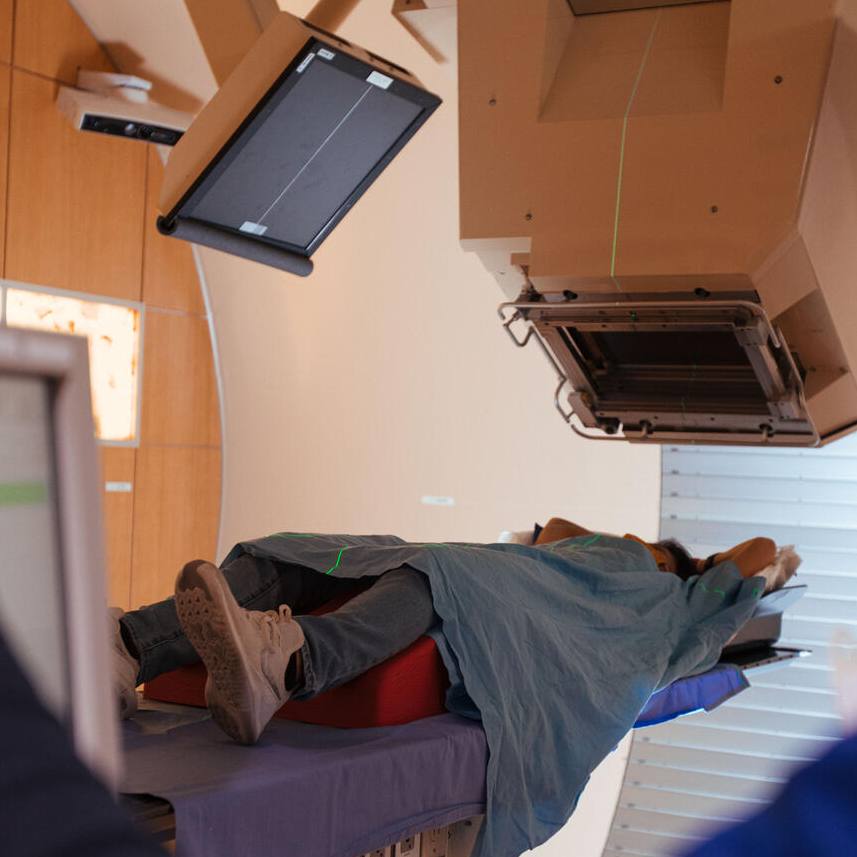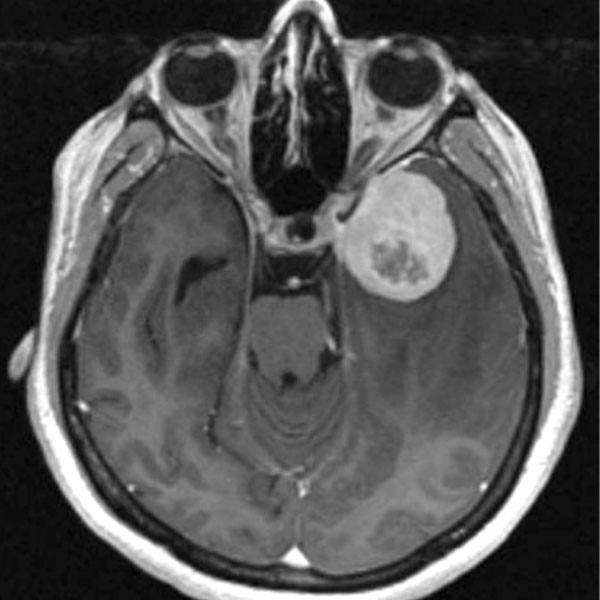
"I started writing my first book at the age of two. It's gonna be published at the age of four. Not bad for a little kid, huh?"
But Dean Weitenhagen isn't a child prodigy with a five-year plan. He is a 70-year-old commercial real estate broker with a new lease on life — and a new "birthday" he celebrates — thanks to a lifesaving stem cell transplant for acute myeloid leukemia.
Dean's new birthday, and his upcoming book, have given him a chance to reflect on the purpose and meaning he found after his yearslong journey with AML and how a treatment he feared saved his life.
This is his story.
Chapter I: Unexpected results
The months leading up to Dean's diagnosis weren't filled with debilitating or mysterious new symptoms. Save for a little breathlessness, he felt healthy — healthy enough to be a caregiver for his wife, Patsy.
Patsy had suffered an ischemic stroke in 2015, and for months, Dean had been helping her work through rehabilitation to recover movement of her body. When rehabilitation for her right arm hit a wall, Dean even accompanied Patsy to China, where she sought naturopathic medicine treatments.
Cancer was not on Dean's mind.
As is often the case with AML, Dean's cancer was discovered by accident in 2016 during a routine exam and bloodwork in his home city of Des Moines, Iowa. "It was a standard blood test," he says. "My wife and I have a yearly exam and have bloodwork done, so it was just pure luck that I got the test."
Dean got a call about his results as he and Patsy were preparing to escape the Iowa cold for a vacation in Arizona before returning to China. His blood counts were abnormal, and his care team didn't like what they saw.
With his thoughts focused on Arizona sunsets and spending quality time with Patsy, Dean was not particularly concerned. He asked to be referred to Mayo Clinic in Phoenix.
When Dean arrived at Mayo Clinic in Arizona, he met with Michael Feinstein, M.D., an oncologist who has since retired. After several tests, including a bone marrow biopsy, Dr. Feinstein confirmed what Dean's hometown care team had suspected: Dean had acute myeloid leukemia.
Chapter II: The caregiver becomes the patient
The transition from caregiver to patient happened quickly for Dean, and he had trouble catching up. "I was taking care of my wife. I was busy dealing with that, and I just didn't spend hours looking into AML," he recalls.
From what he learned in a quick internet search, Dean wasn't hopeful. "When I saw that it was in many cases fatal, I just closed my eyes — maybe closed my eyes to all of it and put it away until I saw Dr. Khera for the first time," he says.
Dean was taken even more aback when he met with Nandita Khera, M.D., his Mayo Clinic hematologist in Phoenix, who said he needed to be hospitalized and begin chemotherapy right away. "She looked me straight in the eyes and said, 'I'm putting you in the hospital this minute,'" he says. This shook him. "The reality of having a disease so dangerous that it called for beginning treatment within the hour was nearly too much to comprehend.” Ultimately, his care team told him he would need a stem cell transplant to give him the best chance at survival.
With a better understanding of the urgency of his disease, Dean knew he needed to be closer to his support system. He asked Dr. Khera if his treatment could be transferred to Mayo Clinic's campus in Rochester, Minnesota, which was closer to his two children and close friends. After consulting with her colleagues, Dr. Khera agreed — on the condition that he be there by noon the next day.
"The reality of having a disease so dangerous that it called for beginning treatment within the hour was nearly too much to comprehend.”-DEAN WEITENHAGEN
Chapter III: Hesitation, contemplation and decision-making
Dean’s treatment began soon after he arrived in Rochester. Dr. Khera recommended a two-phase approach, beginning with one month of induction therapy using chemotherapy to kill as many cancer cells as possible. If needed, the second phase — consolidation therapy — would be a stem cell (bone marrow) transplant.
The long hospital stay and time away from Patsy were hard on Dean, but the chemotherapy worked. "He did very well, and his cancer went into remission," says Dr. Khera. However, the characteristics of Dean's leukemia cells pointed to the need for more treatment.
"We have a risk stratification system for leukemia that can tell if chemotherapy alone is good enough or if a patient needs a bone marrow transplant," says Dr. Khera. In Dean's case, pathology results indicated he would need a transplant soon.
Dean’s closest donor match was his son, who was a half-match. "The degree of match is important because the lower the degree of match, the higher the complications, including graft-versus-host disease," says Dr. Khera.
Dean discussed bone marrow transplant with Mark Litzow, M.D., a Mayo Clinic hematologist-oncologist. "I asked about my future without the transplant," says Dean. "Dr. Litzow told me I would probably die within a few months. It struck me hard. I got up off the bed, hugged him and cried."
After reading more about graft-versus-host disease and learning about a late friend's experience with it, Dean decided the potential cure did not outweigh the risk of complications and poor quality of life. When Dr. Litzow called him about his decision, Dean says, "I let him know I was forgoing his recommendation."
Reflecting on his decision, Dean says, "I didn't give Dr. Litzow a chance to explain the ups and downs of the transplant. I was moving on my own accord with what I had seen and heard."
Dean, like Patsy, opted to try naturopathic medicine instead.
Two years passed before Dean's cancer returned in 2019. As his cancer team expected, it was even more aggressive than before.
Again, Dean began chemotherapy. This time, he says, the side effects were more intense. "I lost so much weight," he says. "It was a struggle to gain weight. I was just struggling."
Chapter IV: A match made in Germany
This time, when Dr. Khera suggested a bone marrow transplant, Dean agreed. He committed to moving within an hour of Mayo Clinic in Arizona for at least nine months following his transplant.
But one question remained: Who would be the donor? Dean eventually fully matched with not one but three donors — all of German ancestry, like him.
Now four years — and four new birthdays — out from his transplant, Dean is cancer-free. While he has lingering effects from chemotherapy and other complications his care team is helping him manage, Dean says he is grateful he took a leap of faith and had the bone marrow transplant. "I feel great. And I am indebted. The care I received and continue to receive at Mayo Clinic in both Minnesota and Arizona — I get such amazing care."
Since his transplant, Dean has also documented his life and experience with leukemia in an upcoming book, "I Just Turned Two: How I Learned to Live After Nearly Dying."
Though timing ultimately led to a perfect donor match for Dean, Dr. Khera says patients no longer need to leave a match up to chance. "With half-match transplants, we have a technique that reduces the risk of graft-versus-host disease substantially. That's why half-matches are the fastest-growing source of donors," she says. This is improving survival and life expectancy for people with leukemia.
Dr. Khera adds that Mayo Clinic researchers also are exploring techniques to reduce the risk of bone marrow transplant rejection and complications even when donors are low-degree matches for a patient.
Leukemia continues to be a complicated disease to treat, and it's important that patients seek care from experienced cancer centers, says Dr. Khera. But treatment advances like these leave less room for doubt and a little more room for extra birthdays.
Learn more
Learn more about acute myeloid leukemia and find an acute myeloid leukemia clinical trial at Mayo Clinic.
Join the Blood Cancers and Disorders Support Group on Mayo Clinic Connect.
This article originally appeared on the Mayo Clinic Comprehensive Cancer Center Blog.
Also, read these articles:
- "Latest advancements in treatment for acute myeloid leukemia"
- "Mayo Clinic Connect brings together 2 women with leukemia, 46 years apart"







